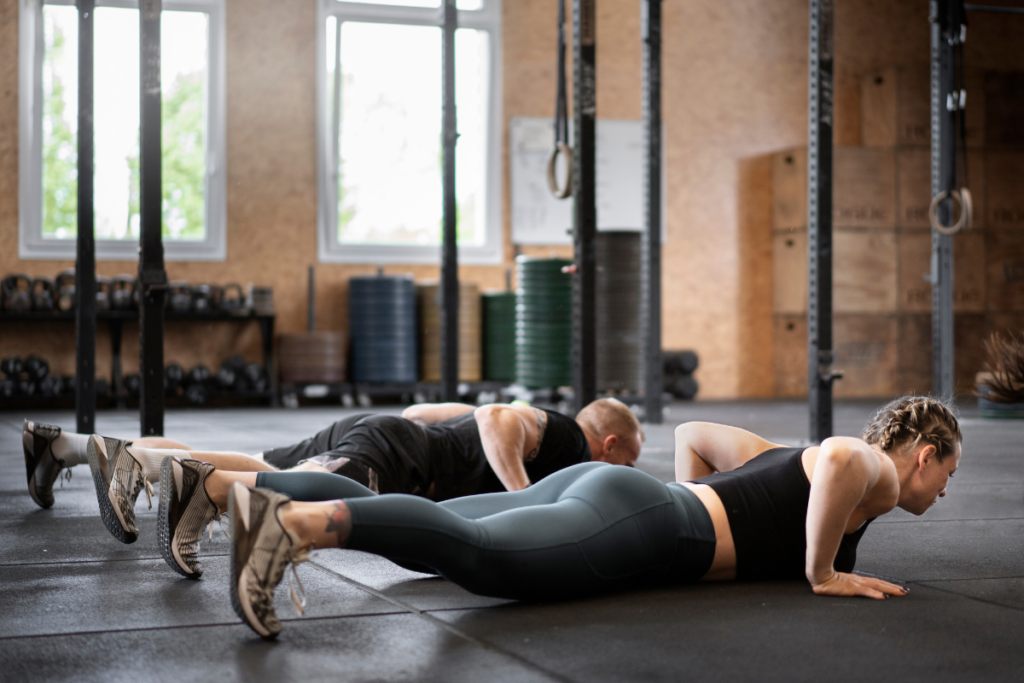When it comes to achieving a successful workout, one thing is clear: it all begins with a plan. And before hitting the gym, you need to take a moment to plan your session. You can start by determining the number of reps and sets for each exercise. This simple step will help you optimize your time and make the most out of your workout.
In this article

You’ve probably heard the terms “sets” and “reps” in various workout plans. But what exactly is the difference between a set and a rep?
These fitness terms serve as key elements that structure workouts and influence muscle growth, strength, and endurance. And when it comes to building mass and strength, there’s more to it than just pumping iron and focusing on specific muscle groups. It takes dedication and constant challenges.
One way to break through plateaus is by manipulating training variables like reps, sets, intensity, volume, and rest periods. These factors have a direct impact on your performance and gains.
What is the difference between sets and reps? Sets refer to the number of cycles or rounds of a specific exercise you perform, while reps (short for repetitions) indicate the number of times you repeat a particular movement within each set.
What are sets and reps?
A “rep” or repetition indicates the number of times you perform a particular movement within each set. For instance, if you aim to do 10 reps of dumbbell squats, it means you will perform the squat movement pattern from start to finish a total of 10 times within each set.
On the other hand, a set represents a specific number of consecutive repetitions performed without rest. So, if you plan to do 3 sets of dumbbell squats, it means you will perform the exercise for a certain number of reps, take a short rest, and repeat the cycle for a total of 3 sets.
So, to summarize, if you plan to do 3 sets of 10 reps of dumbbell squats, it would involve performing the squat movement 10 times in a row, resting briefly, and repeating this cycle for a total of 3 sets.
Why should you use sets and reps in workouts?
Sets and reps serve as valuable tools for assessing your initial strength and tracking your progress over time. Talk about measurable gains!
Additionally, a structured workout plan can be a game-changer. No more aimlessly wandering around the gym or wondering what to do next. With a clear plan in hand, you can focus on pushing your limits and achieving those fitness milestones.
Having a target for the number of sets and reps you do in each exercise also acts as a mighty motivator. When that little voice inside your head whispers, “Quit early,” you can silence it by reminding yourself of your goals. It’s a powerful tool to keep you going when the going gets tough.
What role do sets and reps play in muscle building?
Sets and reps play a significant role in muscle building (muscle hypertrophy). Here’s how sets and reps contribute to muscle growth:
- Muscle fiber recruitment: Performing multiple sets and higher reps helps recruit a larger number of muscle fibers. This increased recruitment stimulates the muscles to adapt and grow. As you lift weights or perform resistance exercises, the muscle fibers experience tension and micro-damage, initiating the muscle-building process.
- Metabolic stress: Higher rep ranges (typically 6-12 reps per set) create metabolic stress in the muscles. Metabolic stress refers to the accumulation of metabolites, such as lactate and hydrogen ions, as a result of sustained muscular contractions. This metabolic stress triggers an anabolic response, promoting muscle growth and hypertrophy.
- Time under tension: Sets and reps influence the total time under tension (TUT) that the muscles experience during a workout. TUT refers to the total duration that the muscle is under load during an exercise. Increasing TUT through multiple sets and reps increases the stimulus on the muscles, leading to greater muscle growth.
- Hormonal response: Sets and reps can influence the hormonal response in the body, particularly the release of anabolic hormones such as testosterone and growth hormone. Higher volume training with multiple sets and reps has been associated with an increase in these hormones, which can further support muscle growth.
- Progressive overload: Sets and reps are vital components of progressive overload, which is key for muscle building. Gradually increasing the weight, reps, or sets over time challenges the muscles, forcing them to adapt and grow. Progressive overload ensures that you continually push your muscles beyond their previous limits to stimulate muscle hypertrophy.
- Recovery and adaptation: Adequate recovery between sets and workouts is essential for muscle growth. By allowing sufficient rest periods between sets and incorporating rest days into your training program, you provide the muscles with the opportunity to repair and adapt, leading to muscle growth over time.
How do you determine the number of reps, sets, and rests?
If you’re new to strength training, I strongly advise seeking the guidance of a certified personal trainer to set your fitness goals and devise a tailored plan. It’s important to note that the number of reps you should do varies based on your strength levels and the weights you use. So the number of reps that works for someone else, may not necessarily be suitable for you.
The key lies in working your muscles to the point of fatigue, where the deeper muscle fibers begin to fortify themselves with newfound strength.

As a general guideline, lighter weights should be accompanied by a higher number of reps, while heavier weights warrant fewer reps. It’s a balance between resistance and repetition to sculpt muscles into awe-inspiring forms.
Here’s where precision comes into play. Each set should be executed with impeccable form until you approach the brink of compromising your technique. For example, if you can perform a biceps curl flawlessly for eight reps before any deviation occurs, then planning to execute eight reps per set is your target.
Now, let us turn our attention to the perennial question of rest periods. While experts may hold varying opinions, scientific insights shed light on the matter. A comprehensive literature review encompassing 35 clinical studies indicates that resting anywhere from a modest 20 seconds to a generous 5 minutes between sets enhances both the effectiveness and safety of your workouts. Thus, granting your muscles a suitable window for recovery.
Should you do high reps, low reps, or medium reps?
Depending on the amount of weight you lift, you have three options: high reps, low reps, or medium reps. Let’s break down each rep range and how they impact muscle growth.
- High reps: This means performing 15 or more repetitions per set. Remember, these numbers are not set in stone, but they give you an idea of what high reps typically entail. It’s important to note that the definition of high reps may vary depending on your goals and the type of athlete you are. Powerlifters, bodybuilders, and long-distance runners may have different perspectives on what constitutes high reps.
- Low reps: This involves doing 1 to 5 repetitions per set. Here, the focus is on lifting heavier weights to build strength. If your main objective is to get stronger, this is the range where you can challenge yourself with heavier loads, always maintaining proper form and safety precautions.
- Medium/moderate reps: This falls within the range of 6 to 12 repetitions per set. It’s a balance between building muscle size and strength. If you’re looking for a well-rounded approach to muscle development, this rep range is a good choice.
Each rep range serves a specific purpose based on your training goals. If you want to increase muscle size (hypertrophy), sticking to the 8-12 rep range is commonly recommended. For overall strength improvement, focusing on 1-5 reps with heavier weights can be effective.
Endurance athletes, who need to sustain their efforts over extended periods, often perform high reps of 15-20 with lighter weights. This approach helps them build resilience to fatigue and enhance muscle endurance.
Frequently asked questions (FAQ)
Got more questions about sets and reps in exercise routines? Check out some commonly asked questions about this topic below.
What role do sets and reps play in weight loss?
In the context of weight loss, both high-rep/low-weight sets and low-rep/high-weight sets can be effective when combined with a proper diet. High-rep sets can help burn more calories during the workout, while low-rep sets can boost metabolism post-workout due to the intensity of the exercise.
Why is rest between sets important?
Rest between sets allows your muscles to recover and prepare for the next set. It’s crucial for preventing fatigue, maintaining proper form, and optimizing performance.
How can I avoid overtraining when using sets and reps?
Avoid overtraining by ensuring adequate rest and recovery between workouts, listening to your body’s signals, and avoiding excessive volume or intensity too quickly.
Final Word
Understanding the purpose of sets and reps can transform your workouts, whether you’re a fitness enthusiast or just starting your fitness journey. Tailoring sets and reps to your goals is key, whether you want to build muscle, improve endurance, or lose weight.
Avoid common mistakes and challenge yourself to see the transformative power of adjusting sets and reps. Progress takes time, so be patient and consistent. Don’t forget to share this article with a friend, and check out my blog for more tips on all things fitness. Stay motivated on the journey to a stronger and healthier you!
